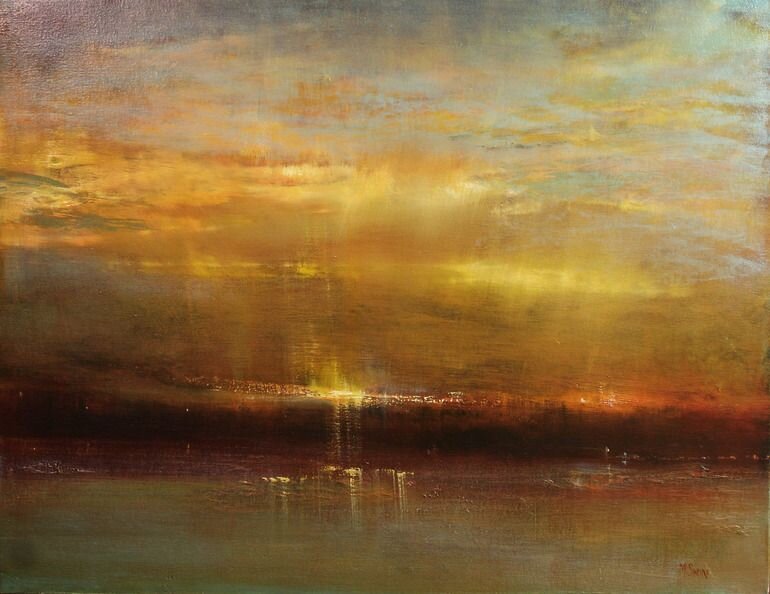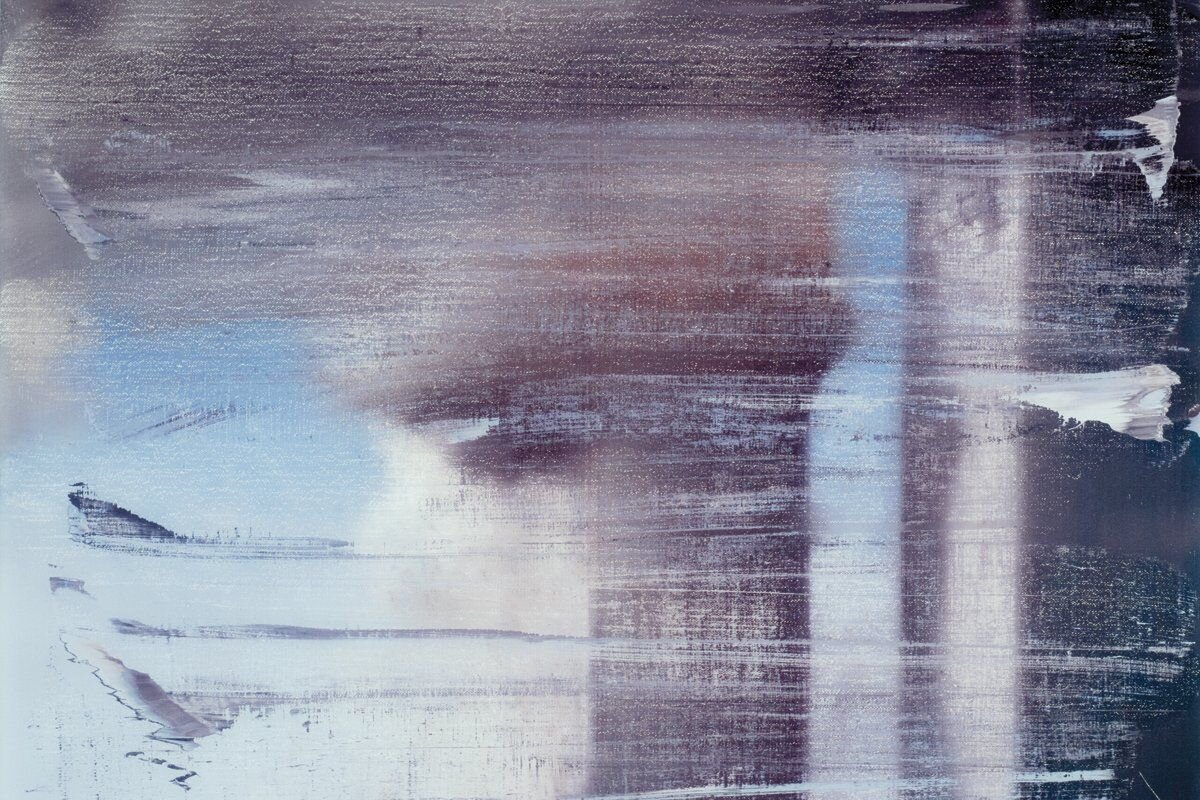Maurice Sapiro
Tonalism veers toward lyrical abstraction in the work of Maurice Sapiro.
By Christopher Volpe
Maurice at work
Tonalism veers toward lyrical abstraction in the work of Maurice Sapiro. Born in 1932, Sapiro could be considered one of the elder statesmen of contemporary tonalist landscape painting. He adopts the tonalist practice of severely limiting his color range and linear delineation in favor of atmosphere and a marriage of subtle and dramatic modulations of value and hue.
Over the course of his career, Sapiro has explored a wide range of style and subject matter: more or less traditional tonalist landscapes tinged with abstraction, semi-abstract sky scapes, still lifes, and portraits, as well as entirely abstract poured paintings.
During the course of his career, his practice has evolved from a more deliberate, traditional approach to a far more intuitive one. As he always has, he starts with gessoed hardware-store hardboard which he stains with a semitransparent imprimatura underpainting (he usually uses burnt sienna thinned with liquid). He then "stipples" the underpainting with the rough tip of a brush to create an underlying texture in the densest areas of the future composition, such as trees or rocks, bringing life to a surface that would otherwise be flat.
Maurice Saprio
With many paintings behind him, Sapiro takes off with just a general image in mind of what he's trying to accomplish and improvises from there. "I always have, next to the easel, an old photo, or a color chart, or a print of one of my earlier paintings to use as a template," he says, "a reference for color and contrast."
"But I have no rules or formulas,” he says. “I simply push paint around until the image I imagine appears. I've learned to sometimes follow the direction the painting is taking me…. Painting is a lot like giving CPR. I keep working until the painting is breathing on its own!"
One of the keys to how he works is surely that he mixes three different grays (using different proportions of alizarin crimson, viridian, and white) that he uses to modify out-of-the-tube mixes.
His creative life began as a music student, in which, he says, he was "miscast." After some restless years as a soldier and later a teacher, he found his role as a painter. He taught himself largely by visiting world-class museums, and he advises students who want to paint to "look at paintings. Not on an electronic screen, but in person, up close. Look at the edges," he says, "that's where the secrets of how they were painted are revealed."
His development wound its way through the history of Western art. He "hero-worshipped certain painters and styles," starting with Rembrandt and Sargent, for their bravura brushwork, and discovering the possibilities in landscape painting through Cezanne and "the beauty in cool colors," he said. "The Luminists challenged me to paint light and glare."
But the real game-changer came in 2002 when he saw "Gerhard Richter: 40 Years of Painting" at the Museum of Modern Art in New York City.
Gerhard Richter
"His blurring and blending of pigment showed the possibility of using pigment in a different way," he said. "I then embarked on trying to represent the intangibles in a tangible presentation. Light, clouds, mist, fog, glare, haze, were now possible to paint."




